Welcome, Spring
Sunny days offer good prospects of spotting early butterflies, including the spring azure.
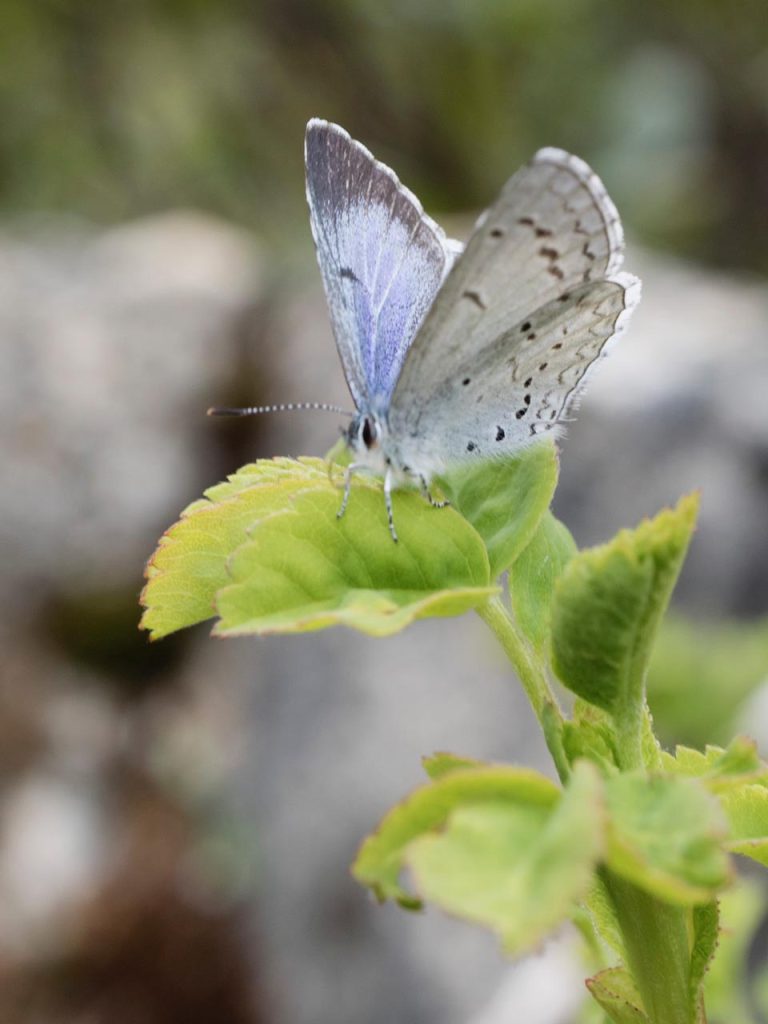
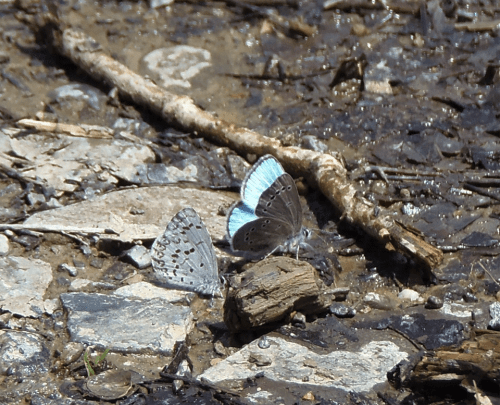
What a first weekend in March we had! People in the neighborhood were out in tee shirts; it was 63 degrees and felt like 80 degrees in the sun. The sky was as blue as a COVID pandemic day. I hope we’ll never read that sentence again—not poetic but true. A sheep shearling jacket was shed and dropped in the road by someone—who hopefully would be back looking for it later. Late winter was offering a spring day and my enthusiasm was shared by many. I’m often surprised by how few people are outside in my neighborhood, but not on this day; entire families were strolling our quiet streets.
It was perfect weather for the earliest of butterflies. The mourning cloak winters over as an adult in the crevices of tree bark and leaf litter and is one of the first to emerge. Its dark body and creamy borders are like a mirage flying down a woodland path. I have discussed this beauty in a previous article.
By contrast this week’s subject butterfly, the spring azure, whose approach to emergence is from a chrysalis, has not overwintered. Temperatures and conditions have to be just right for it to appear, generally 55 to 59 degrees. I didn’t get lucky and see any this past weekend, but I am optimistic.
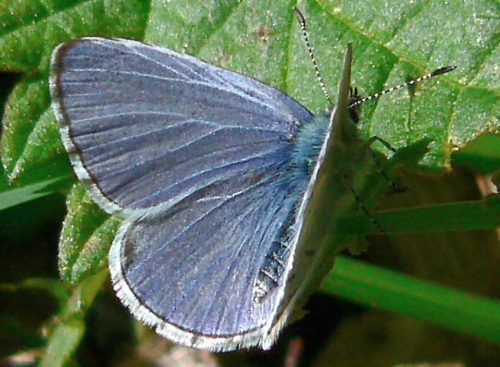
Let’s take a moment to review the lifecycle of butterflies and moths. All will start as an egg and after the egg hatches, the insect moves to its larval stage, a caterpillar. The larva becomes a pupa, which will transition to an adult butterfly or moth. In other words, it will undergo metamorphosis. This larval conversion takes place in a chrysalis for butterflies, in a cocoon for moths.
When they emerge in late winter or early spring, nectar is scarce. Spring azures get their nourishment from mineral sources, like mud puddles, rock surfaces, leaf litter, and even bird droppings.
Once they have emerged their priority is mating, which begins the whole circle of life again—the assurance of future generations. It is not unusual to see two azures flitting, about a foot off the ground, in courtship. These small butterflies live as adults for only a few days or weeks, so breeding is that much more urgent. Their underwing is camouflaged against leaf litter and when their wings are open you get a flash of blue, in a “now you see me, now you don’t” display of color. I often have trouble following these winged dancers.
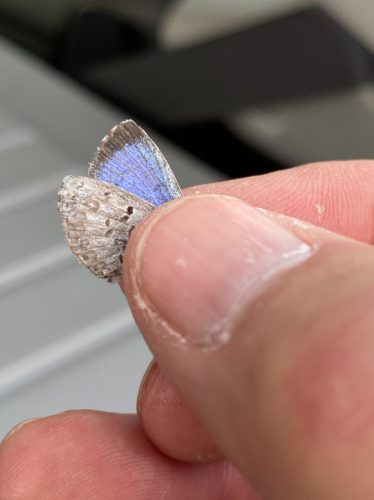
After mating the female must find a host plant on which to lay her eggs so the larva has a food source. Some butterflies lay clusters of eggs, while azures and some others lay single eggs. Woody plants are their preference—dogwoods, viburnum, cherry, cherry flowers, and heaths such as blueberries and Labrador tea. Remember that each plant-eating insect has evolved with specific species of plants that it can tolerate or rely on as a food source. That’s one reason why native flora is so important.
The caterpillars are little eating machines, nibbling on newly developing leaves and buds. Most will also feed numerous other insects, birds, and spiders. It takes thousands of caterpillars to satisfy a clutch of hungry chicks; the caterpillars are tiny and would make a great snack for an ant. However, to guard against being devoured by ants, azures produce a honeydew that ants relish, so the ant palpates them for the liquid and in turn protects them (Mary Anne Broge).
Lepidopterist David Wagner relays that prior to scientists studying collections of butterflies, the spring azure (Celastrina ladon complex) was thought to “represent a single species [but it] is now thought to be a complex of six or more biologically distinct entities.” He further suggests that much distributional information must now be re-examined or possibly discarded. I suspect a non-scientist like me hasn’t a prayer of making such distinctions, although time of year may narrow down the species somewhat.
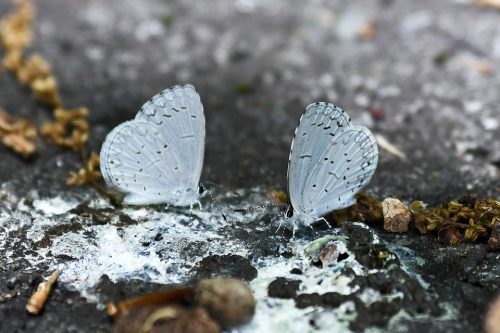
In How to Spot Butterflies, the Pat and Clay Sutton simplified this exploration to some extent, stating that on a spring walk they observed perhaps eight of these “thumbnail-sized” fliers within a mile, including “a few of the forms, lucia and marginata. The confused species concept of this group was forgotten as we watched the frenzied chases, the blue uppersides glistening in the warm sun.”
They were essentially suggesting that it is okay to simply enjoy the show, maybe not for cataloging experts but for most of us. We can bask in the sun just as they do.
Later the Suttons go on to explain that the spring azure has been split into a number of species. In 1999 the taxonomy was yet to be fleshed out, yet we know the summer azure was once believed to be a second flight of spring azure but is now known to be a distinctly different species.
As local naturalist Pat Sutton has been known to say with gusto, “Butterflies are solar powered,” since a sunny day, or even a cloudy day that clears up, offers good viewing prospects. We have had a number of days reach temperatures in the high 50s so it’s time to keep your eyes peeled for the early arrivals.
Sources
- How to Spot Butterflies, Patricia and Clay Sutton.
- Caterpillars of Eastern North America, David L. Wagner.
- The amazing Mary Anne Broge is the instructor at Bowman’s Hill Wildflower Preserve, Pennsylvania Master Naturalist, and editor of Butterfly Gardener. Look her up on The Natural Web, Exploring Nature’s Connections.









